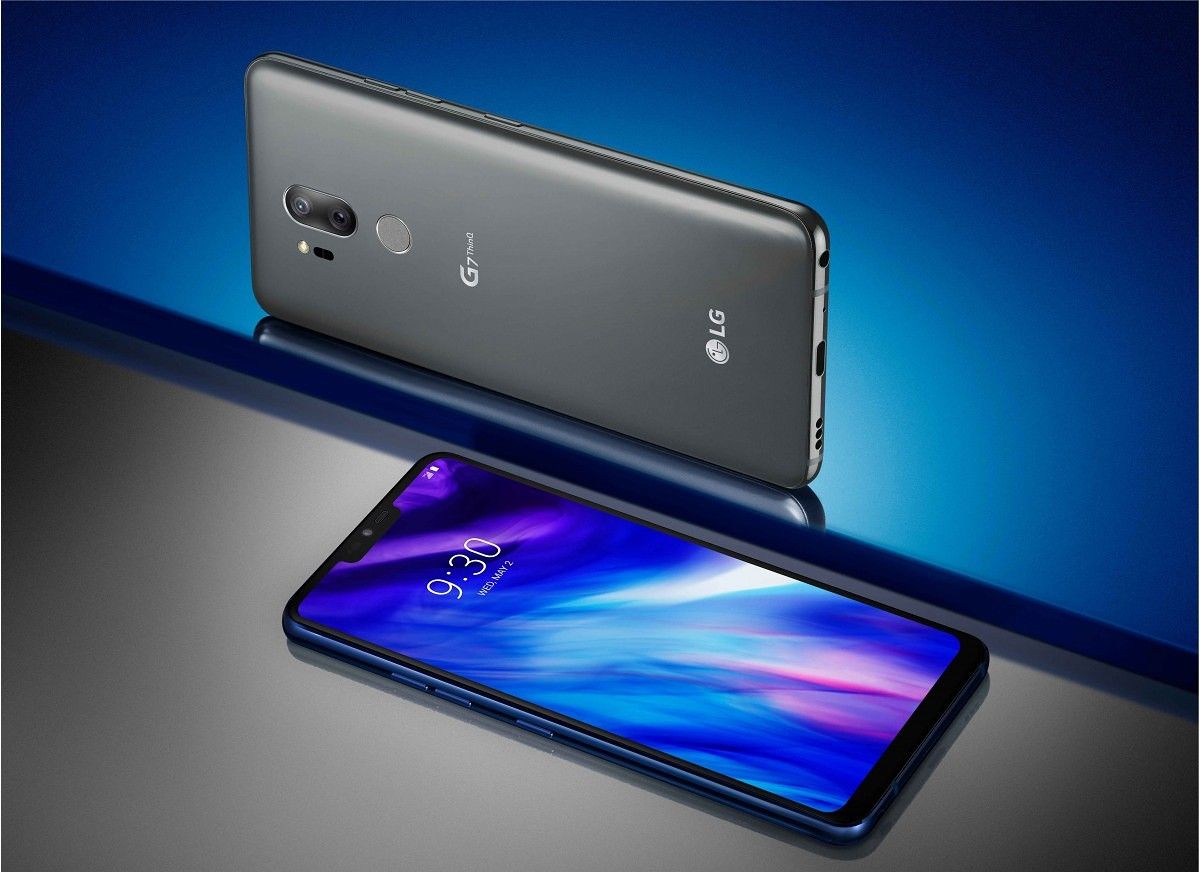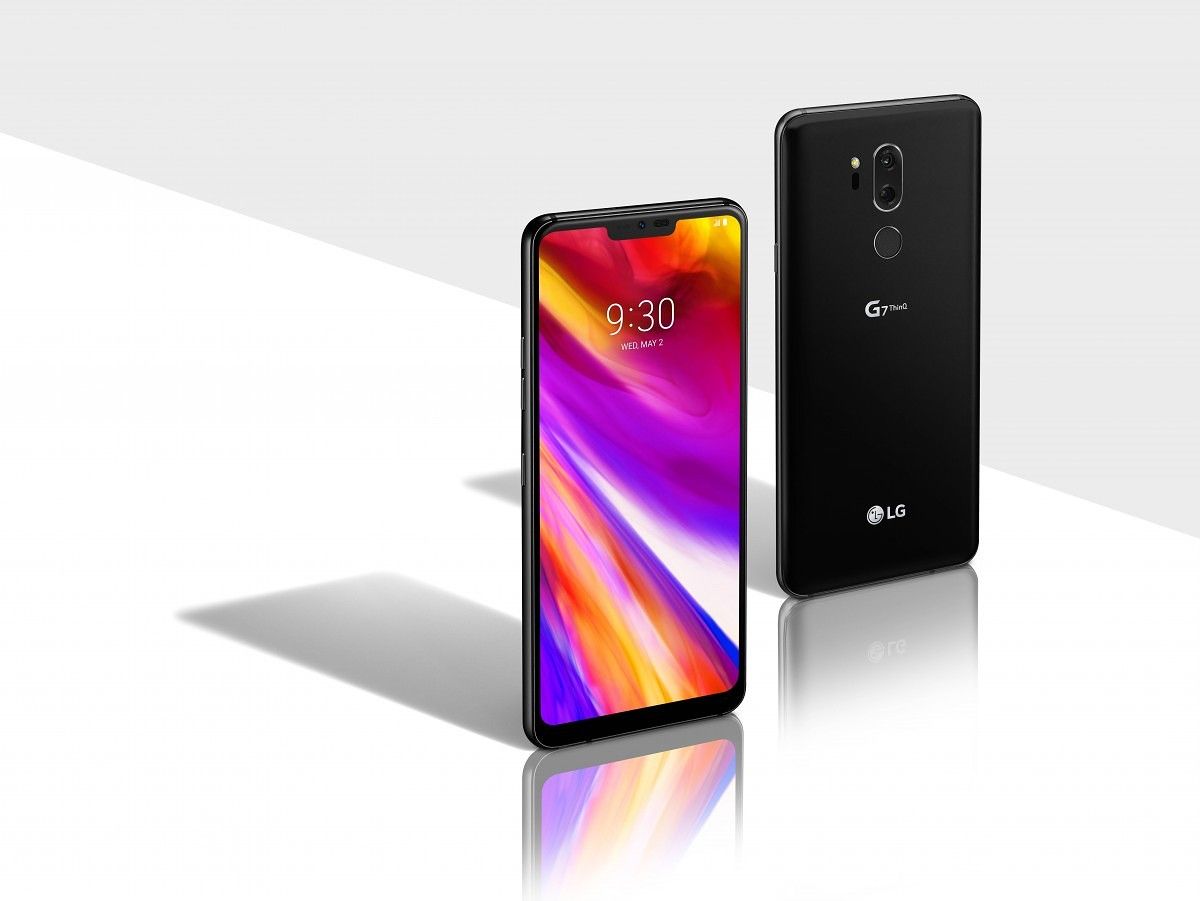After months of rumors and leaks, LG officially announced the LG G7 ThinQ today. The phone is the successor to last year's LG G6. It has a refreshed design, a display notch, the latest-generation system-on-chip (in the form of the Qualcomm Snapdragon 845), and a new dual camera setup.
The ThinQ branding for the phone follows the release of the LG V30S ThinQ at Mobile World Congress, which is an upgraded variant of the LG V30 with more RAM and added "AI" features. Let's take a deeper look at the specifications of the LG G7 ThinQ:
LG G7 ThinQ - Specifications at a glance
|
LG G7 ThinQ |
Specifications |
|---|---|
|
Dimensions |
153.2 x 71.9 x 7.9 mm |
|
Software |
LG UX 6.0 on top of Android 8.0 Oreo |
|
CPU |
Octa-core Qualcomm Snapdragon 845 (4x 2.8GHz Kryo 385 Performance cores + 4x 1.8GHz Kryo 385 Efficiency cores) |
|
GPU |
Adreno 630 |
|
RAM and storage |
4GB of RAM with 64GB of storage / 6GB of RAM with 128GB of storage; microSD card slot |
|
Battery |
3000mAh |
|
Display |
6.1-inch QHD+ (3120x1440) (6.09-inch - full rectangle, 5.94-inch - excluding notch region) notched FullVision "Super Bright" M+ LCD with a RGBW matrix, 19.5:9 aspect ratio, 1000 nits brightness |
|
Wi-Fi |
802.11a/b/g/n/ac |
|
Bluetooth |
Bluetooth 5.0 |
|
Ports |
USB Type-C, Nano SIM, 3.5mm headphone jack |
|
Audio |
Boombox SpeakerDTS:X 3D 7.1 Surround SoundHi-Fi Quad DAC |
|
Rear cameras |
16MP camera with f/1.6 aperture, 71-degree field-of-view, OIS, phase detection autofocus, laser autofocus16MP wide-angle camera with f/1.9 aperture, 107-degree field-of-view |
|
Front-facing camera |
8MP front-facing camera with f/1.9 aperture |
The LG G7 ThinQ has a metal frame and a glass back. The fingerprint sensor is on the back of the device, and it's separate from the power button. The dual rear cameras are oriented vertically, unlike the horizontal arrangement of the V30's dual camera setup. The volume and power buttons are on the left and right-hand sides of the device, respectively, along with a dedicated hardware button to launch the Google Assistant. The phone is also water- and dust-resistant.
Display
The LG G7 ThinQ has a 6.1-inch Quad HD+ (3120x1440) FullVision "Super Bright Display" with an extra-tall 19.5:9 aspect ratio. It has a display notch which can be hidden via software. Despite the notch, the phone has a small bezel at the top, along with narrow side bezels and a chin at the bottom.
The display is an M+ LCD, and it can reach up to 1000 nits of brightness thanks to extra white sub-pixels with the use of a RGBW matrix. The "Super Bright Display" also has 100% coverage of the DCI-P3 color space and can switch between six different color settings depending on the display content, including Auto, Eco, Cinema, Sports, Game, and Expert. When users are watching a video, the display will automatically activate the cinema mode, for example.
The display bezel is 50% smaller than that of the LG G6, according to the company. Also, the profile-switching feature helps the display to be 30% more power efficient than the G6's display. In earlier LG G series devices, there was no way to adjust color settings, but the LG G7 ThinQ has an adjustable RGB color level option in each of its display modes that allow users to tweak RGB gamut while the display modes are active.
Performance
The LG G7 ThinQ is powered by the Qualcomm Snapdragon 845 system-on-chip. The SoC has four Kryo 385 Performance cores clocked at 2.8GHz and four Kryo 385 Efficiency cores clocked at 1.8GHz, paired with the Adreno 630 GPU. In the U.S., the G7 has 4GB of RAM and 64GB of storage along with a microSD card slot. In international markets, it will ship with 6GB of RAM and 128GB of storage.
Cameras
The LG G6 had 13MP + 13MP dual rear cameras, while the V30 had 16MP + 13MP rear cameras. The LG G7 ThinQ's dual rear camera setup is upgraded from the V30, as both the standard-angle and wide-angle sensors have a 16MP resolution. The standard-angle camera has a 16MP sensor with a 71-degree field-of-view and a f/1.6 aperture. The wide-angle camera has a 16MP sensor with a 107-degree field-of-view and a f/1.9 aperture. (For reference, the LG V30's wide-angle camera has a 120-degree field-of-view).
The dual camera module has many "AI" features that are branded as "AI Cam." AI Cam analyzes subjects in a photo and provides recommendations on how to improve the photo. It also comes with filters such as Person, Flower, Landscape, Sky, Low Light, etc. The "Super Bright Camera" mode kicks in when conditions are extremely dark and automatically increases the brightness of each photo. (For now, the jury is still out on whether bright camera modes like this are a good idea or not.)
The cameras can do Portrait Mode to blur the background of the subject. The bokeh effect can be applied in real-time or after the shot is captured. Also, the wide-angle camera now is said to have less distortion.
Audio
The LG G7 ThinQ has a “Boombox Speaker.” The phone uses its inner space as a resonance chamber to "amp up the bass and deliver a premium, loud and room-filling audio experience."
The phone also has "Super Far-Field Voice Recognition." According to LG, the G7 will be capable of hearing the user from a further distance, and it will pick up the user's voice even in noisy places.
The LG G7 has a 32-bit Hi-Fi Quad DAC, making it the first G series device to have a Quad DAC in all markets where it's available. (The LG G6 had a Quad DAC, but only in certain markets.) It also has 7.1 channel DTS:X 3D Surround Sound.
Connectivity
The LG G7 ThinQ is powered by a 3000mAh battery, which is much smaller than the 3300mAh batteries of the G6 and the V30.
In terms of connectivity, it has a USB Type-C port, Wi-Fi 802.11a/b/g/n/ac, Bluetooth 5.0, nano-SIM, and a 3.5mm headphone jack. It runs LG UX 6.0 on top of Android 8.0 Oreo, which means that it has Project Treble support.
Pricing and availability of the G7 will vary by carrier in the US.
Let us know your thoughts about the LG G7 ThinQ in the comments below.


